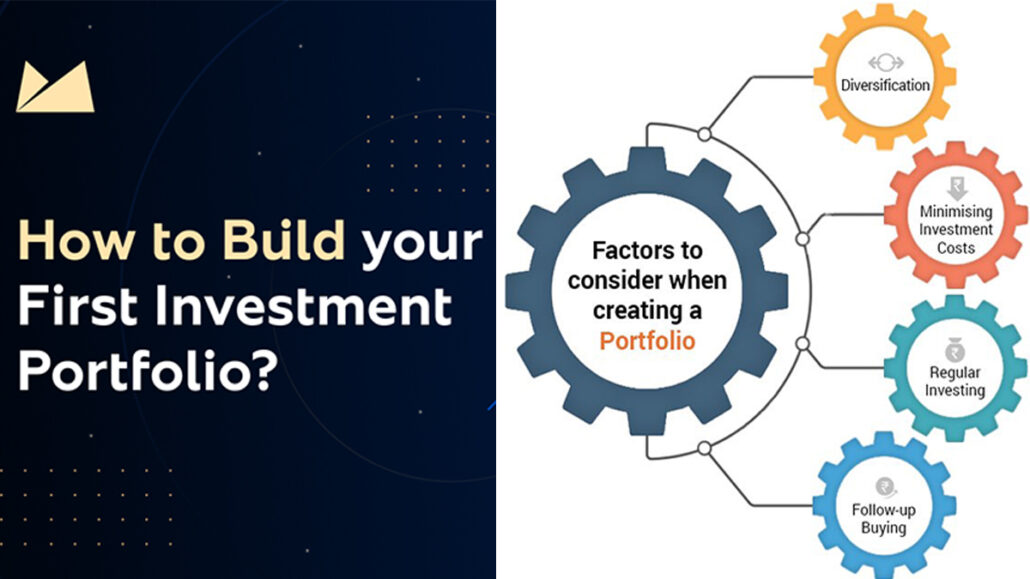An investment portfolio is something every industry, business owner, and investor needs to have. An investment portfolio is a record of all your invested assets. Your portfolio will contain a record of all investments you make. But do you know how to build an investment portfolio?

Building up an investment portfolio can be very intimidating. There are easy and faster ways to build up your investment portfolio. These steps are simple to comprehend and implement. This article gives you details on that.
What is an Investment Portfolio?
An investment portfolio is the gathering of assets, which also includes investments like stocks, mutual funds, bonds, and exchange-traded funds. An investment portfolio is described as more of a concept than a physical space, mainly in the age of digital investing. So after investing, your investment information will be saved in your investment portfolio.
Types of Investment Portfolios
There are three main types of investment portfolios. These portfolios will be created based on specific circumstances. Below, the types of investment portfolios are stated and explained.
Conservation Portfolio
This type of portfolio is recommended if the investor has a low tolerance for risk, a need for liquidity, or a short investment horizon. This portfolio prioritizes capital preservation over capital growth. It consists typically of a large proportion of investment-grade bonds and less volatile stocks, which include large-cap stocks and mutual funds.
Moderate Portfolio
A moderate portfolio is another type of investment portfolio that falls somewhere between aggressive and conservation portfolios in terms of their various levels of risk. This portfolio is often defined as a “balanced portfolio.” This portfolio is best for people who have mixed views on risk, a need for liquidity from time to time, and a long investment time horizon.
Aggressive Portfolio
For people who have a high tolerance for risk, a minimal need for liquidity, and a long investment time horizon, this is the portfolio best for you. This portfolio prioritizes growth over capital preservation and contains a high proportion of domestic equities. An aggressive portfolio has a high level of volatility and potential return. But, it has a relatively low level of income.
How to Build an Investment Portfolio
There are basic steps to building an investment portfolio. These steps are designed to be very easy and fast to follow up on. Aside from all of that, they are very helpful and will direct you toward building up your investment portfolio.
1. Determine how much help you need
When you build your investment portfolio from the start, you can invest and manage your funds without having to take a DIY route. There are several low-cost options available to carry out this step.
2. Select an account working toward your goals
Before you can build an investment portfolio, you need to have an investment account. There are various types of investment accounts. Each type has its own reason and audience. All you have to do in this step is figure out what works best for you.
3. Based on your Risk Tolerance, Select your Investment
Once you have opened an investment account, you will need to fill up your portfolio by identifying the assets you want to invest in. Some of the types of investments are as follows:
- Stocks
These are tiny bits of ownership in a company. Investors are to purchase stocks that they believe will increase in value as time goes on. The only risk to this type of investment is that the stock may not grow at all or it may lose value. However, to diminish that risk, most investors invest using funds, which include index funds, ETFs, or mutual funds, and these hold a gathering of stocks from different companies.
- Mutual Funds
There are a few varieties of mutual funds you can invest in. Their advantage over buying stocks individually is that they allow the addition of instant diversification to your portfolio. Mutual funds allow people to invest in a basket of securities, which consists of investments just like bonds or stock, all at once. Other than stock investments, mutual funds are less risky.
- Bonds
These are loans to the government or companies that get paid back with interest. Bonds are said to be a safer investment than stocks, but they unfortunately have lower returns. Because you know how much interest you will receive after investing in bonds, they are defined as “fixed-income investments.” Bonds’ fixed rate of return can help to balance out riskier investments.
4. Decide on the best asset allocation you want
Now that you know you want to invest mostly in funds, bonds, or individual stocks, how do you decide how much of each asset class you need? Asset allocation is the method by which you split up your portfolio across different asset types. It is extremely dependent on your risk tolerance.
5. Rebalance your Investment Portfolio if Needed
As time goes by, your selected asset allocation may get off track. If one of your stocks grows in value, it might derange your portfolio proportions. To restore your investment portfolio, you need to rebalance it. Some investments, such as target-date funds, can rebalance themselves automatically over time.
